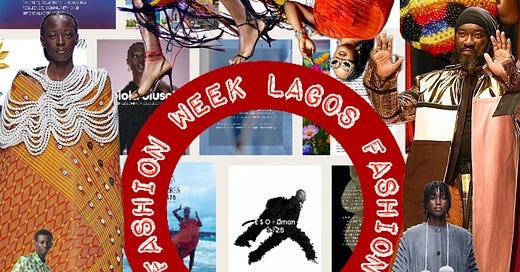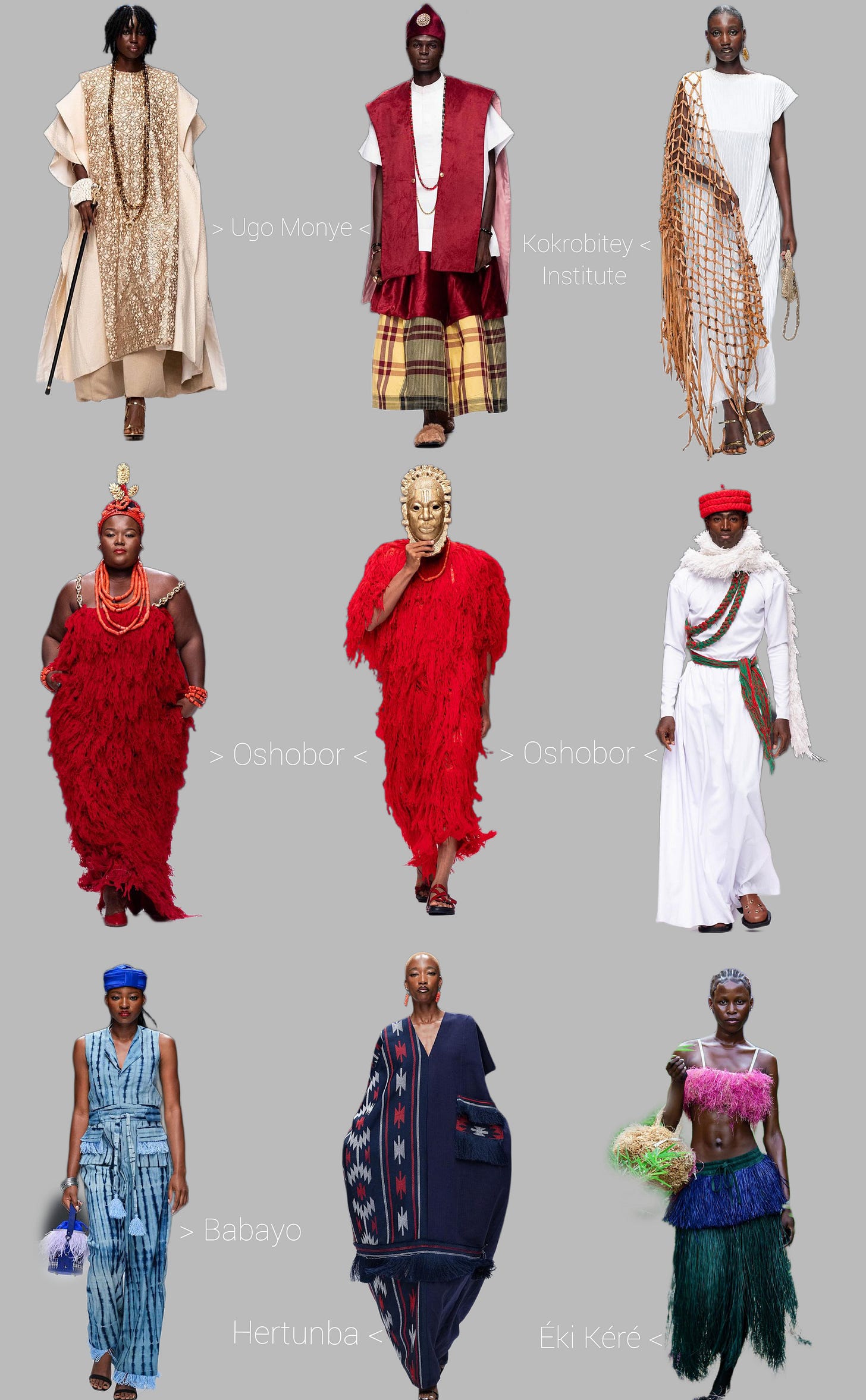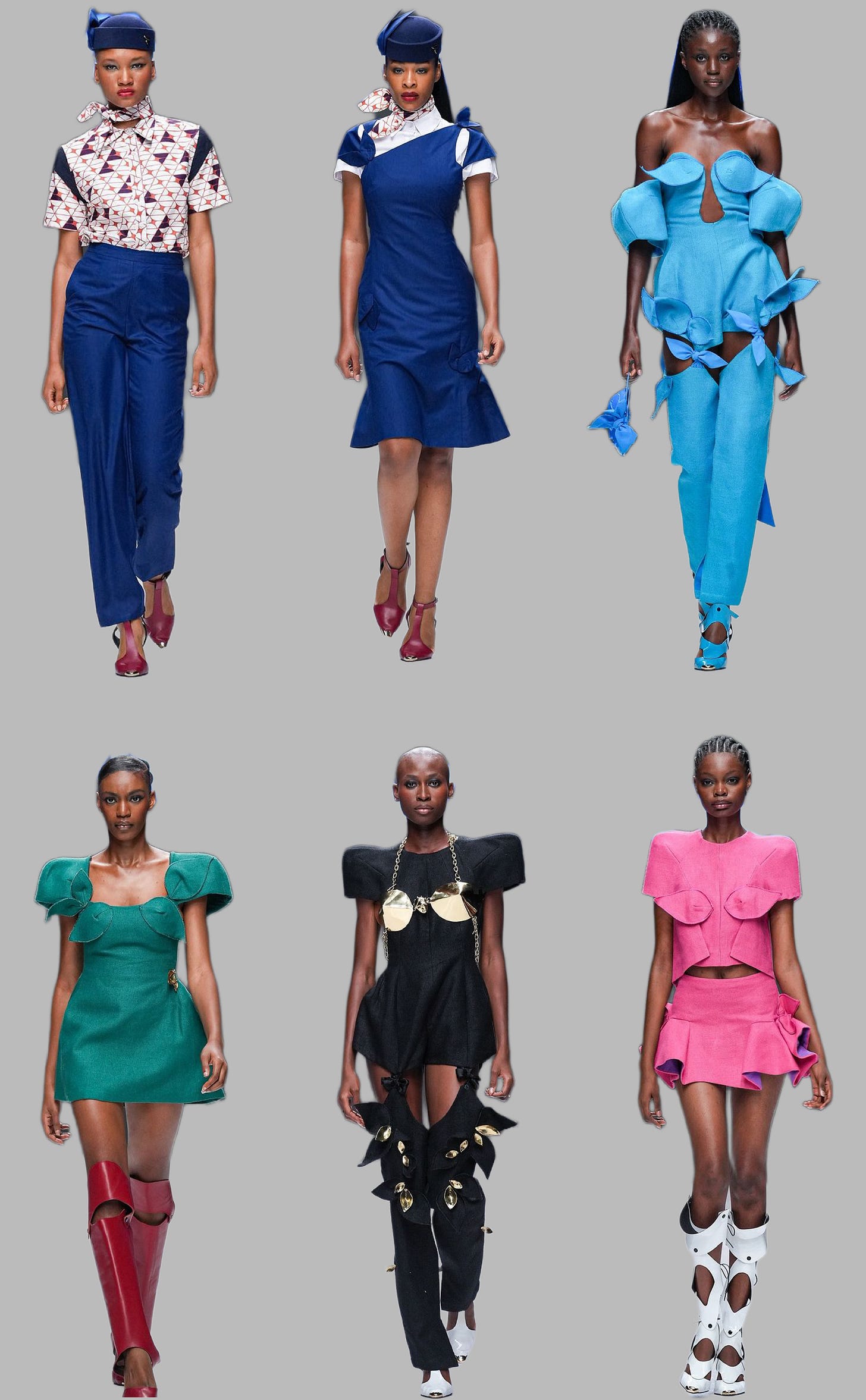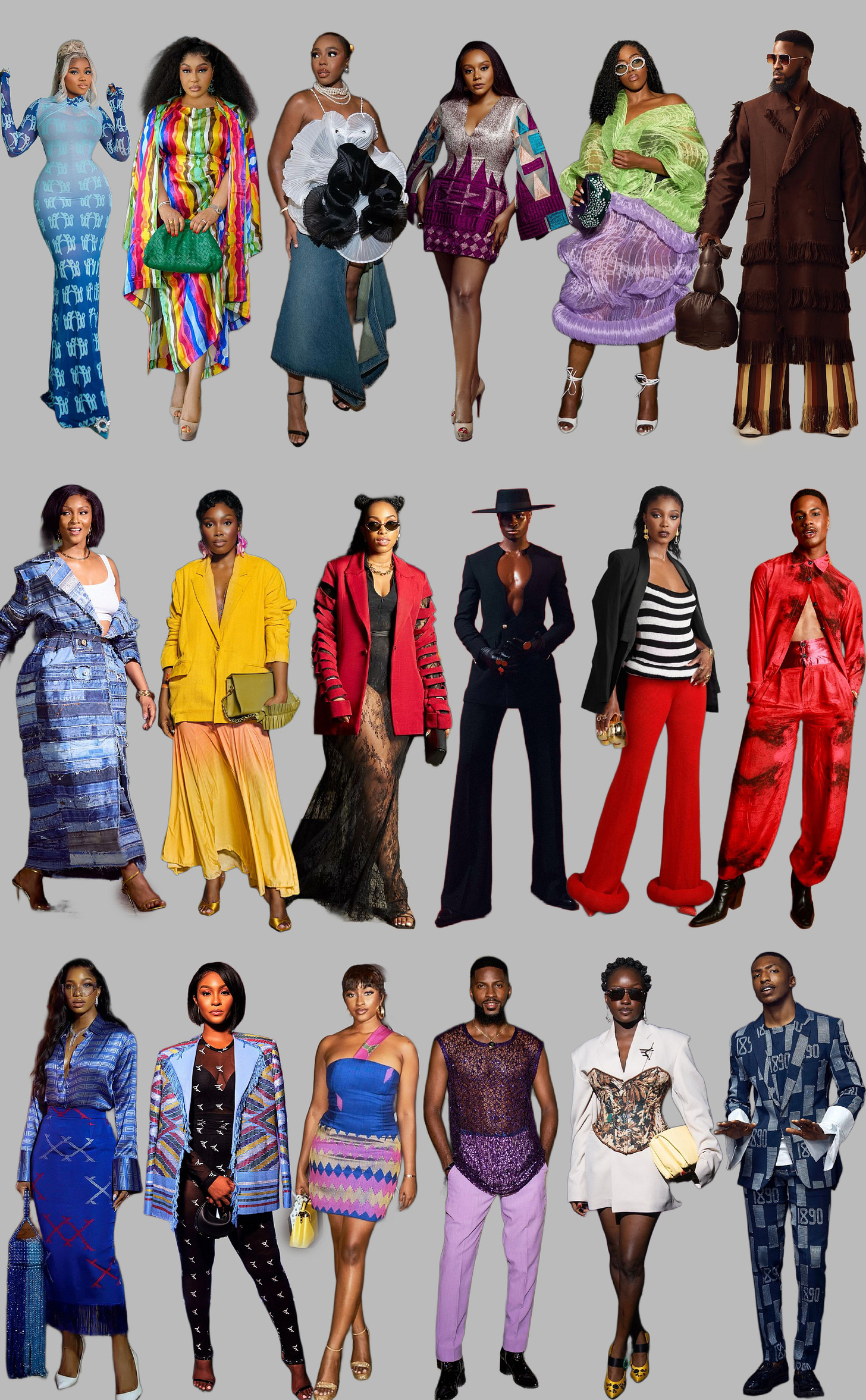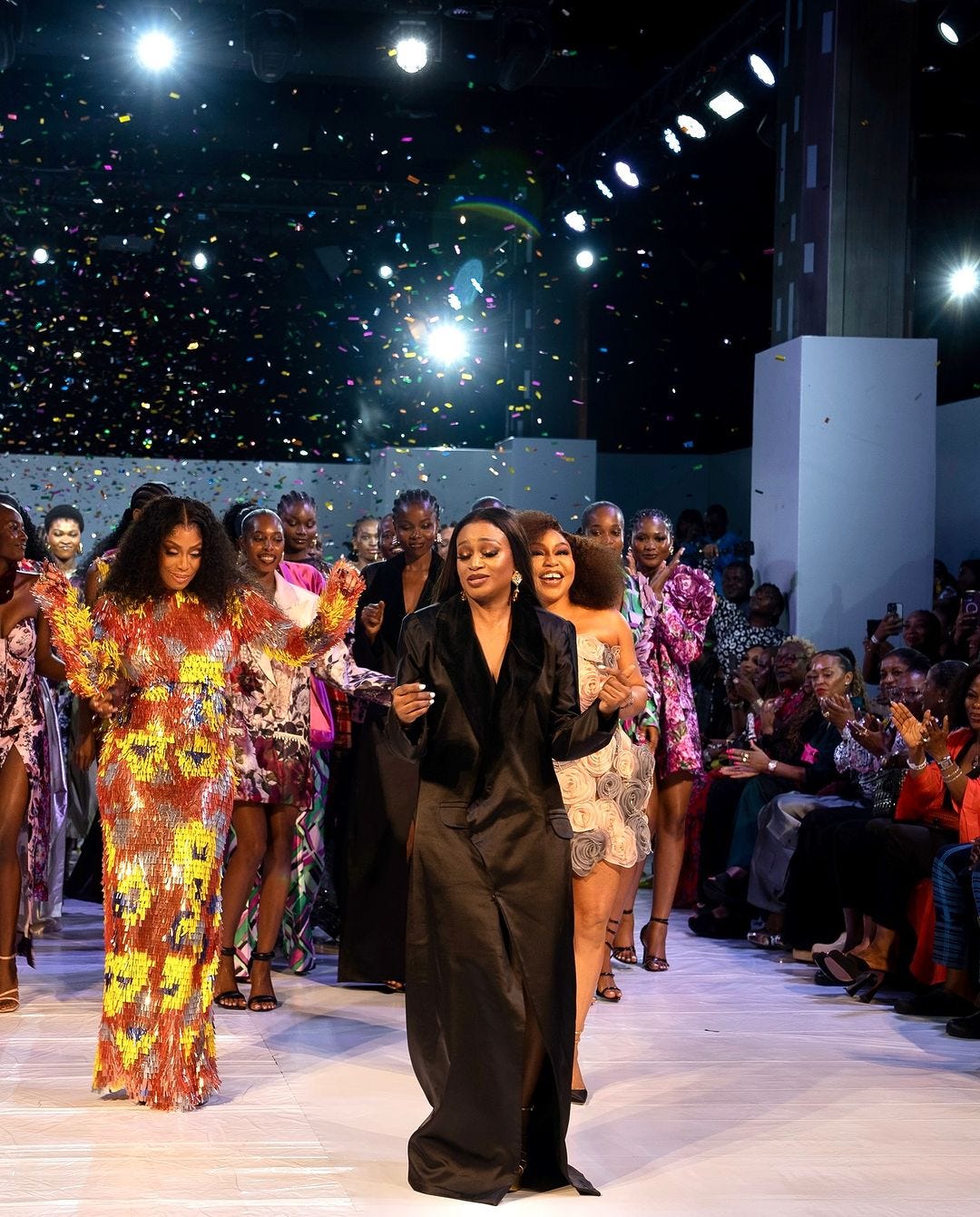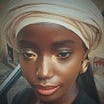From Lagos' Runway, With Love.
Fashion Week in Africa's Fashion Capital on a platter! LFW on and off-site shows to private viewings, celebrity moments, fashion trends, and attendees' styles.
As a flourishing fashion scene with a variety of styles from ready-to-wear to haute couture, Lagos hosts three major fashion weeks each year, including Lagos Fashion Week, Arise Fashion Week, and GTCO Fashion Weekend, so in this log, we will be reviewing the collections displayed at the 2024 Lagos Fashion Week (LFW), founded in 2011 by Omoyemi Akerele, and all other private (non-LFW) shows by individual brands that took place around the same time in the city.
Before we proceed, a playlist consisting of tracks that serenaded these runways⬇️
Fashion week in Lagos was off to a great start as the iconic Banke Kuku brought paradise to us with their SS25 show themed ‘Oceans,’ a depiction of life under the sea as the runway design and a surreal 42-look collection comprising floral silk and vibrant colors, highlighting the beauty of the marine ecosystem and the need for ocean conservation. I mean, look at those prints! They sure made their point. This was so perfectly done (both the set and cloth designs), and the collaboration with Meeyas Jewels for the costume styling was just chef's kiss!
Now fast forward to the 5-day Lagos Fashion Week event.
Aside from runway presentations, there were workshops, fashion and photography masterclasses, business series, showroom events, parties, etc. This year's edition featured 56 African-owned brands (which were predominantly Nigerian) on the runway, with 49 of them walking the 3-day on-site show at the Federal Palace Hotel in Victoria Island, Lagos, Nigeria.
Although a few brands on-site played it safe, I could not care less because the vast majority were fully aware of their power and utilized their innovation in the most applaudable ways.
I fell head-over-heels in love with so many elements at LFW, from incredible pattern work showcased by Emmy Kasbit, FIA, Rendoll, and Oríré, to vibrant colors (which is basically a way of life of the Nigerian people) by Cute Saint, Pepper Row, Desirée Iyama, LFJ(Love From Julez), Babayo, Ejiro Amos Tafiri and Kokrobitey Institute, statement jewelries by Lagos Space Programme(LSP) and Lila Bare, avant-garde profiles by Awa Meité and LSP, ruffled surface enabling a 3D effect by E.S.O by Liman, interesting cut-out details by Fruché and JZO, use of appliqués by Imad Eduso, Loza Maléombho, Iremítidé, Dust of the Earth, Orange Culture and Desirée Iyama, bridal modes by Lady Biba and Jewel Jemila, bold cultural celebration by Oshobor and Ugo Monye, the loveliest silk from Eki Silk and Emmy Kasbit, leather shoe and bag accessories by Maliko, embroidery by Bornstar Nigeria, JZO, Y’wandelag × Heineken 45cl, and Babayo, chiffon plissés by Ejiro Amos Tafiri and FIA, tie-dye by Babayo and Éki Kéré, raffia work by Éki Kéré, Cynthia Abila, and Pepper Row, luxurious beading by Kílẹ̀ńtàr, African hairstyles by Kadiju, exquisite denim powered by a handful of brands, and a bunch of other mind-blowing elements.
Runway trends…
A special trend that swept the runway was denim! We saw denim in the most enticing forms, and many designers rode the wave, especially M.O.T with its ‘Deep Threads’ collection for the modern woman. JZO and Kadiju gave us well-tailored denim suits, Boyedoe and Revival Ldn came through with commendable patchwork, Ajanéé took a dive into reconstruction, LSP propelled unconventionality, while the rest of the labels stuck to incredibly chic silhouettes.
One thing is certain at fashion week in Lagos: there must be an ode to the culture. This is how we tell our story to the rest of the world, how we make our mark, and how we stay true to ourselves even as we embrace the western culture.
An exceptional representation of cultural depth was showcased in Oshobor’s collection titled ‘Edo Odion,’ which paid homage to the Edo culture in the south-south region of Nigeria. The looks were bold, royal, breathtaking, red-hot, masquerade-inspired, with a touch of modern allure. VIEW
We also witnessed a visual narrative of the unity and diversity of Nigerian and African cultures with Ugo Monye’s ‘Ife Aso Anyi’ collection, translating to “what we like” in the Igbo dialect of southeastern Nigeria. The designs were one thing, but the runway was another wonderful display. Despite being showcased on-site, it was one of the top 5 shows—off-site and private shows included. There was a makeshift throne on the runway, and standing a few steps away was Ugochukwu Monye, the designer, covered with many detachable pieces of fabric from head to toe in a masquerade-like manner, which he says symbolizes the Nigerian coat of arms, with each piece plucked by the models as they walked past him, signifying the relentless pursuit of unity. At the end of the show, Davido and Lai Labode, two public figures who walked the runway, took off the masquerade’s veil to reveal Monye. VIEW
Other traditional moments were the addition of the fishing net1 as an accessory by Kokrobitey Institute, the àdìrẹ2 technique utilized by Babayo and Ekí Kéré, aso-oke3 made into boubou4 gowns by Hertunba, some ready-to-wear pieces by Cynthia Abila, etc., and outfits made of raffia5 by brands like Éki Kéré, Pepper Row, and for accessories by Cynthia Abila.
Collaborations
We saw a few collaborations between brands on the runway, especially the coming together of the drink brand Heineken with select clothing brands to launch their 45 Cl bottle, but I think the most striking was Liza Maléombho × Viva Jets, and rightfully so, as the collection was on steroids—outfits, jewelry, shoes, everything! Both brands seamlessly blended travel and couture with this cabin crew collection…I mean seeing this, don't you just wish to book a flight and go explore the world?
Celebrity cam on the runway…
A good number of Nigerian celebrities from various nooks of the entertainment industry rocked the runway. Everyone's favorite moment, especially mine, was when global afrobeats superstar Davido, a.k.a. 001, hit LFW’s on-site runway in an Ugo Monye regalia fit for a king. I immediately lost my mind and started live tweeting. 001 for Ugo Monye wasn't such a surprise at the same time, seeing that the couturier had dressed the superstar for his traditional wedding a few months back. Our celebrity cam also spotted Tubobereni for Ugo Monye, D’banj for Hue, Rita Dominic and Mo Abudu for Lanre Da Silva, Dorathy Bachor for Hertunba, and many others.
Off-site and Private shows
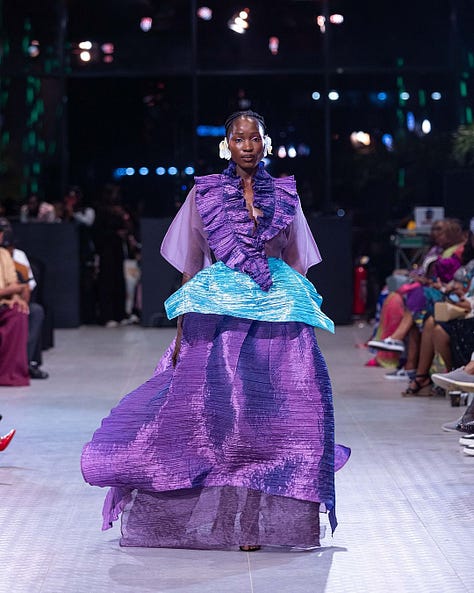
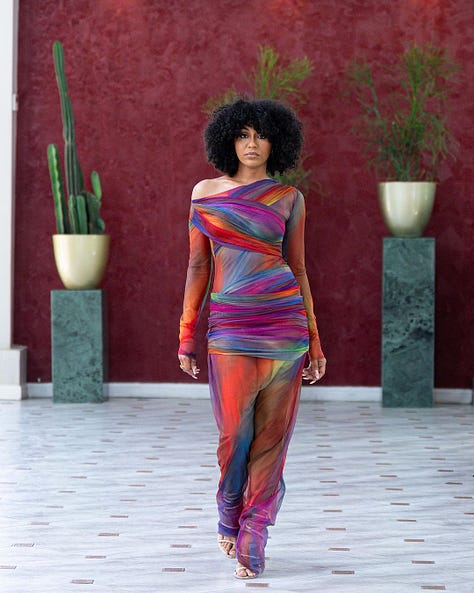
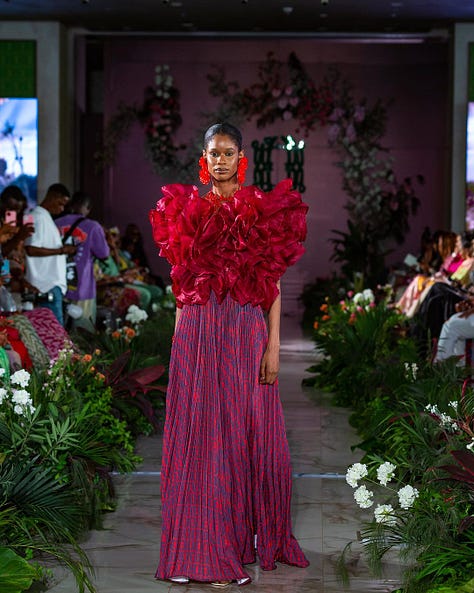
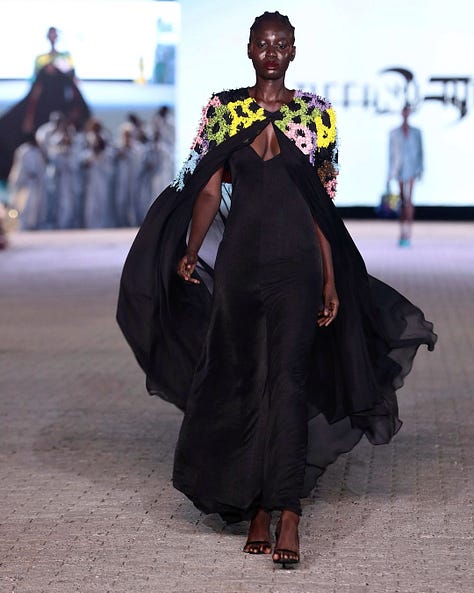
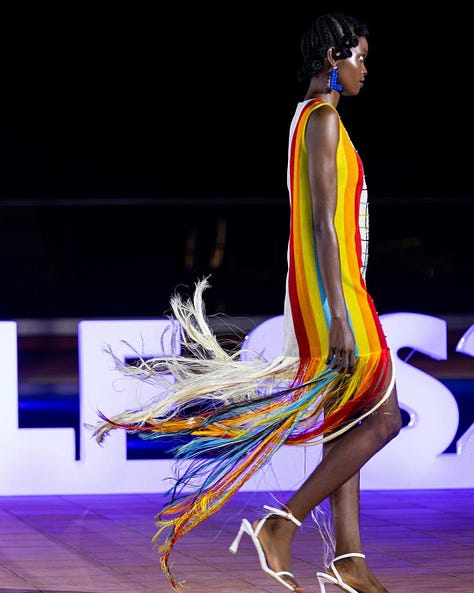
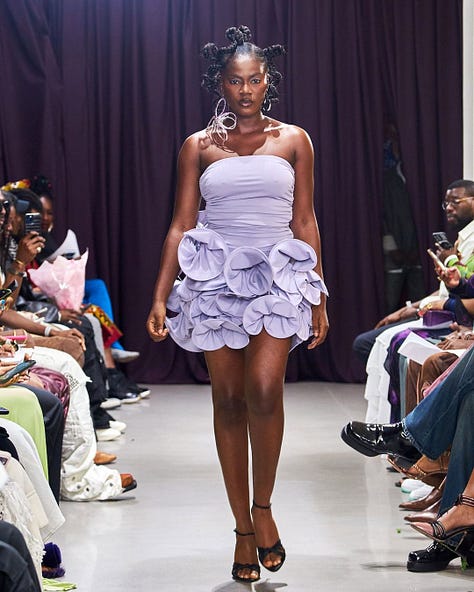
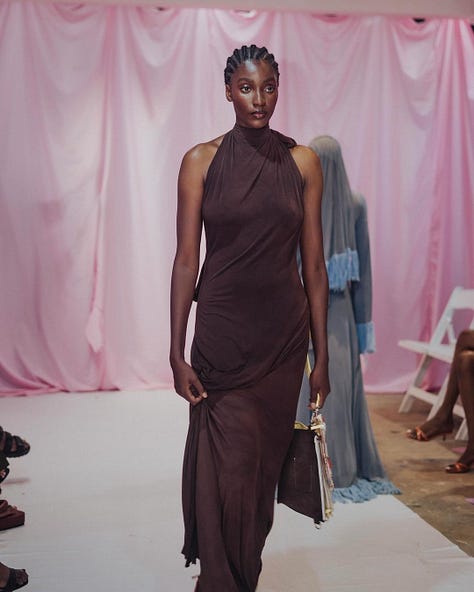


All off-site and private shows were jaw-dropping, both collection-wise and in show production. I loved every single one of them, with a special liking to Ejiro Amos Tafiri’s brightly lit catwalk, Lisa Folawiyo’s poolside show, as the collection was a brilliant display of sport numbers, Wanni Fuga and Éki Kéré’s gardens, Orange Culture's mannequins and flower heads, Tiffany Amber’s street takeover for their 25th year celebration, and the Emmy Kasbit experience to mark their one decade in fashion.
What did Lagos Socialites wear to Fashion Week?
Nigerians know how to rock a look! The above collage holds some of my favorite guest-looks at fashion week. In an order of left to right, top row to bottom, you see them in brands like Wanni Fuga, Sisiano, LFJ, Ejiro Amos Tafiri, LFJ, Boyedoe, Boyedoe, This Is Us × Ibiola Ogundipe, Lisa Folawiyo × Liv&Eve, Orange Culture, NuanceNook, Orange Culture, and Emmy Kasbit (all through the bottom row).
The general mode of sale is each brand’s website, but you can SHOP select looks from seven designers: Boyedoe, Kílèntár, Orange Culture, Abiola Olusola, Lila Bare, Sisiano, and Refine Studios on Moda Operandi’s ‘Best of Lagos Fashion Week’ edit from now till 29th November, 2024. Enroll in email notifications on the website to get 10% off your first order.
Ps: All clothing labels are italicized, and you can view the runway looks from these designers on our notes tab on Substack.
Thank you for reading this far! A trap made of netting, used on fishing boats to catch fish.
Àdìrẹ (tie-dye) is a type of indigo-dyed cotton cloth that is traditionally made in the Yoruba region of southwestern Nigeria, especially by the Egba people of Ogun State. The cloth is created using a resist-dyeing technique that produces striking patterns. Some techniques used to create àdìrẹ include binding, knotting, stitching, and woven strips.
A hand-loomed cloth made from cotton and peculiar to the yoruba culture in the southwest of Nigeria.
A flowing wide-sleeved robe specially worn by women across West Africa.
One of the by-products of the raffia palm found in the rural areas of Nigeria and native to all of West Africa. Raffia is harvested sustainably, meaning the plant is not harmed during the process. The leaves are stripped, dried in the sun, and then sorted into different grades based on their color, texture, length, and width.

